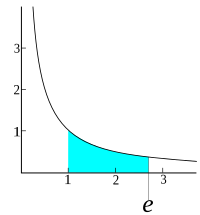
Photo from wikipedia
Introduction A double-lumen tube (DLT) is a traditional one-lung ventilation tool that needs to be positioned under the guidance of a fibreoptic bronchoscope or auscultation. The placement is complex, and… Click to show full abstract
Introduction A double-lumen tube (DLT) is a traditional one-lung ventilation tool that needs to be positioned under the guidance of a fibreoptic bronchoscope or auscultation. The placement is complex, and poor positioning often causes hypoxaemia. In recent years, VivaSight double-lumen tubes (v-DLTs) have been widely used in thoracic surgery. Because the tubes can be continuously observed during intubation and the operation, malposition can be corrected at any time. However, the effect of v-DLT on perioperative hypoxaemia has been rarely reported. The aim of this study was to observe the incidence of hypoxaemia during one-lung ventilation with v-DLT and to compare the perioperative complications between v-DLT and conventional double-lumen tube (c-DLT). Methods and analysis One hundred patients planning to undergo thoracoscopic surgery will be randomised into the c-DLT group and the v-DLT group. During one-lung ventilation, both groups of patients will receive low tidal volume for volume control ventilation. When the blood oxygen saturation falls below 95%, the DLT will be repositioned and the oxygen concentration will be increased to improve the respiratory parameters (5 cm H2O Positive end-expiratory pressure (PEEP) on the ventilation side and 5 cm H2O CPAP (continuous airway positive pressure) on the operation side), and double lung ventilation measures will be taken in sequence to prevent a further decline in blood oxygen saturation. The primary outcomes are the incidence and duration of hypoxaemia and the number of intraoperative hypoxaemia treatments, and the secondary outcomes will be postoperative complications and total hospitalisation expenses. Ethics and dissemination The study protocol was approved by the Clinical Research Ethics Committee of The First Affiliated Hospital, Sun Yat-sen University (2020–418) and registered at the Chinese Clinical Trial Registry (http://www.chictr.org.cn). The results of the study will be analysed and reported. Trial registration number ChiCTR2100046484.
Journal Title: BMJ Open
Year Published: 2023
Link to full text (if available)
Share on Social Media: Sign Up to like & get
recommendations!